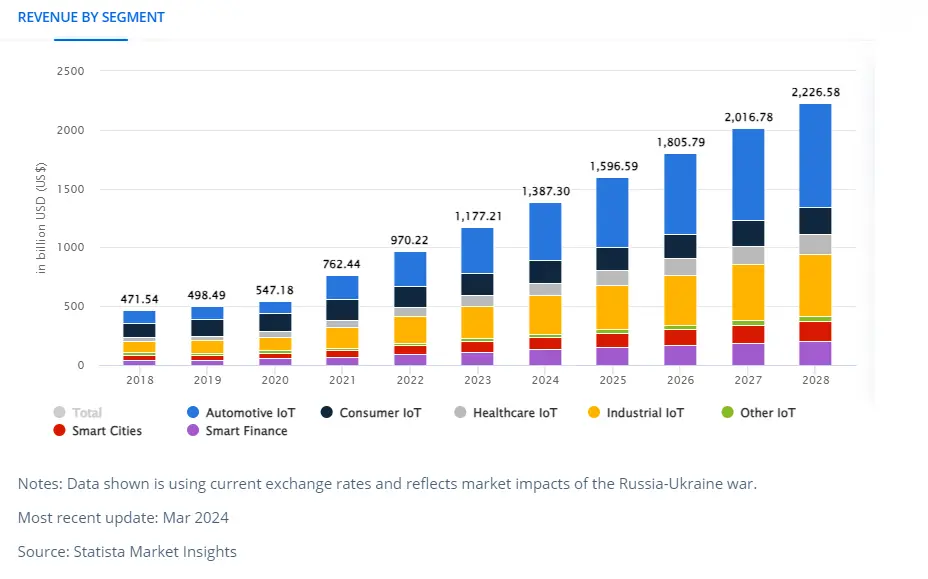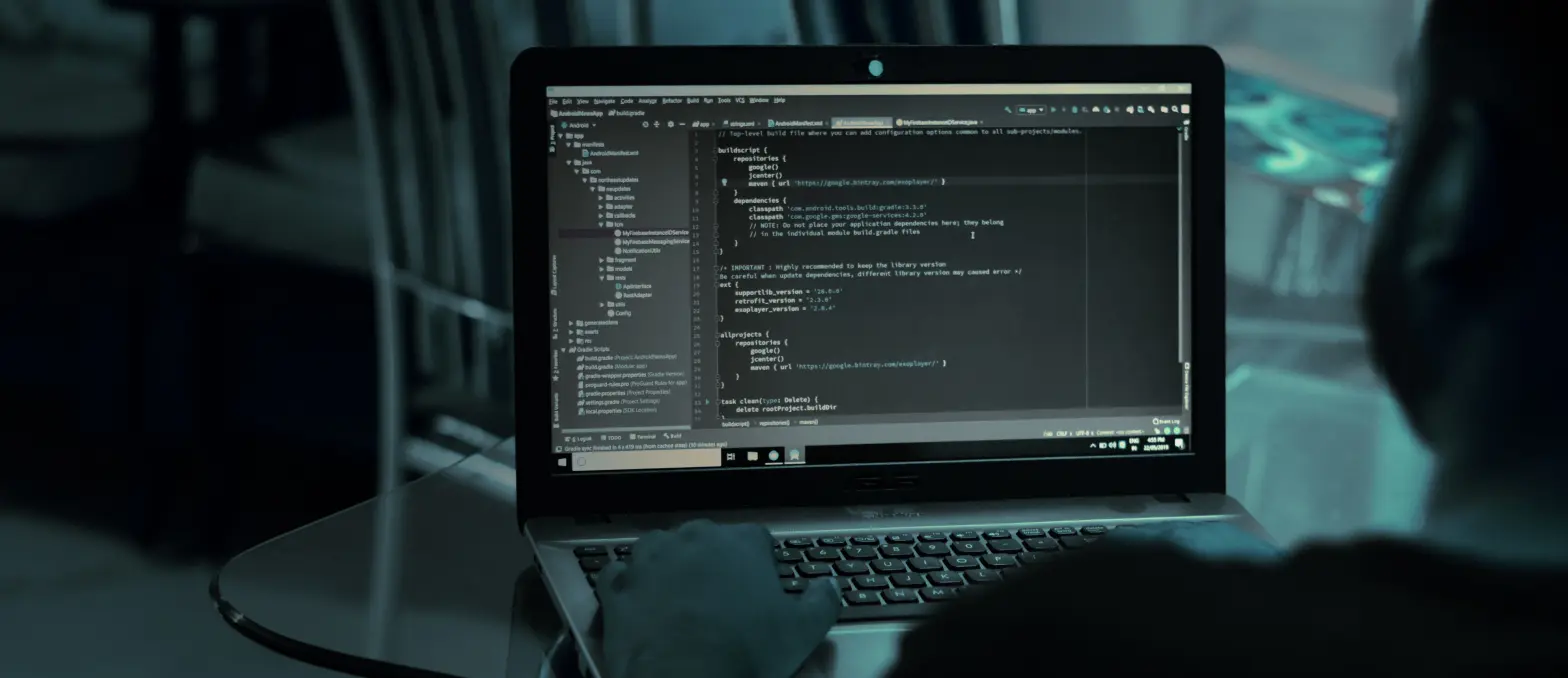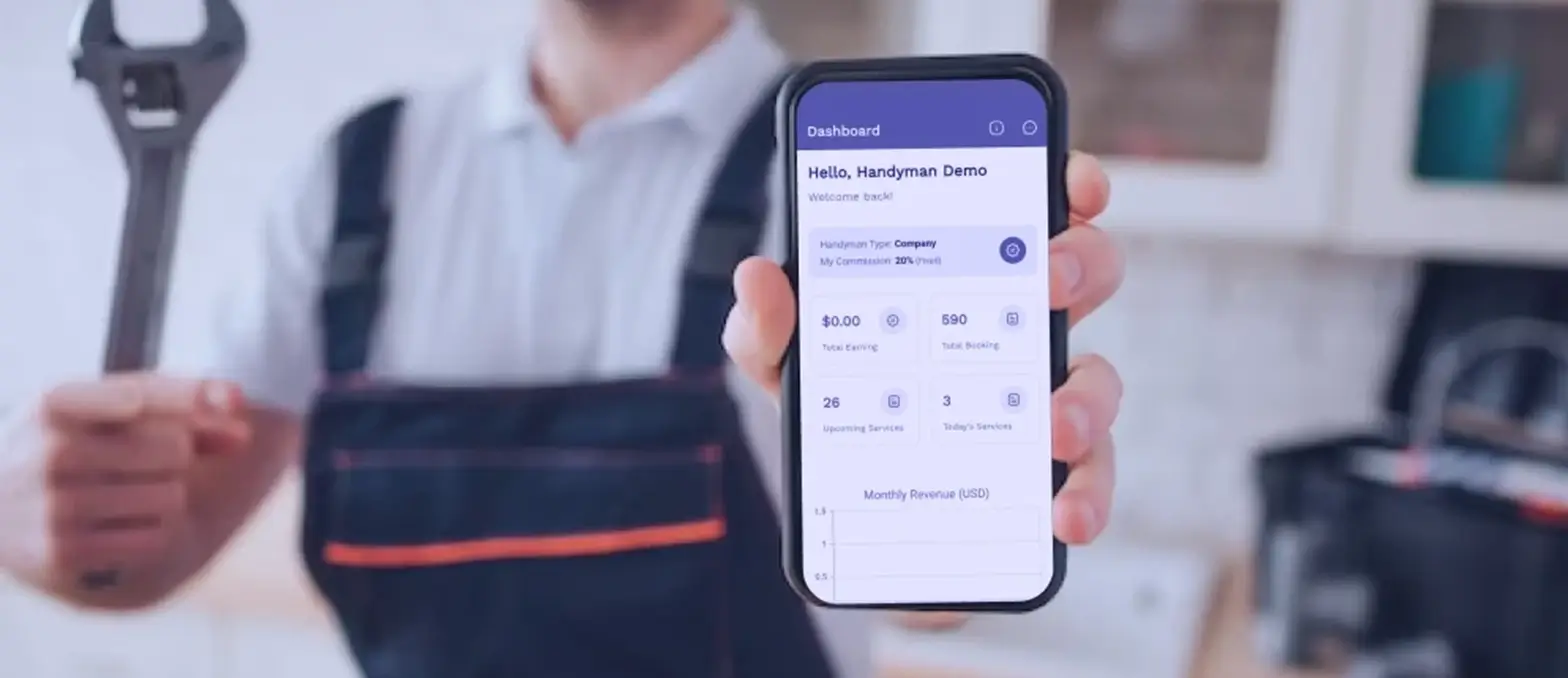Our lifestyles and various sectors have been disrupted by the development of IoT technology. Our basic lives have become smart lives thanks to IoT app development. To operate household appliances, all you need to do is utilize a mobile app. There are bright lights that turn on as you enter the house.
Your automobile takes the least traveled route to work, saving you time to catch up on reading or get ready for your morning meeting on the way. The IoT industry is predicted by Statista to grow rapidly, reaching a global total revenue of $1387.00 billion in 2024. Moreover, it is anticipated that the global market for IoT software will grow at a compound annual growth rate of 24.7% from 2023 to 2029, or $1625.64 billion. Therefore, it is safe to claim that the IoT sector has a bright future.

In your opinion, what would entice a user to select your IOT Apps over thousands of others? It is, as you properly surmised, the user interface. It would serve as the user’s initial point of contact with the digital product. This is also the first thing users see when they launch an app. An application’s interface will quickly lose users if it is badly made or overly awkward.
As a business owner, you have to make early investments in high-quality app UI design and keep up the good work throughout the app’s development and launch. Using a user-designing approach will help you attract and retain more users, as well as increase the amount of time they spend using your app.
Here are some helpful IoT app development tips to assist you create top-notch IoT apps if you intend to employ Scalable IoT Apps for business purposes.
Defining IoT
Another name for the Internet of Things (IoT) is the Internet of Everything (IoE). It is made up of all web-enabled gadgets that use embedded sensors, processors, and communication hardware to collect, transmit, and act upon data they get from their surroundings. These gadgets—often referred to as “connected” or “smart” gadgets—can occasionally communicate with other similar gadgets.
Machine-to-machine (M2M) communication is the method by which they interact with one another’s data. This process is managed in the development of IOT Apps by deploying various algorithms employing AI or other programming languages. IOT app development for device monitoring is typically the focus of an IOT app development company.
How Do Internet of Things Applications Work?
IoT apps are flexible and have a wide range of applications, including IOT in Healthcare, smart homes, agriculture, industrial automation, and more. Enabling smooth communication amongst devices and giving consumers insightful information and control is crucial. Apps for the Internet of Things (IoT) function by linking actual hardware to the network.
They can talk to cloud-based servers and to each other thanks to it. These applications make it possible to monitor, collect, and control data from a variety of sensors and devices. As a result, it establishes a network of linked devices. The general operation of IoT apps is as follows:
1. Connectivity of Devices
Sensors, actuators, and other smart devices are examples of physical devices that have embedded IOT Messaging Protocols (such as Bluetooth, Zigbee, WiFi, and others) and sensors. These gadgets are either directly or via a gateway device connected to the internet.
2. Information Gathering
For example IOT in Retail through sensors, devices gather data from their surroundings. Temperature, humidity, motion, location, and any other pertinent data can be included in this data. After that, the device processes the data locally or sends it to the cloud for additional analysis.
3. Transfer of Data
IoT apps use communication protocols like MQTT, CoAP, HTTP, and others to transfer data from the devices to the cloud or a central server after the data is collected by sensors.
4. Cloud Infrastructure
IOT app development services and apps store, process, and analyze data in the cloud.
5. Analysis and Processing of Data
To obtain valuable insights, the cloud infrastructure examines and evaluates the incoming data. IOT app development services are occasionally utilized in contemporary AI and IOT Technology to find trends, abnormalities, or predictions based on the data that has been gathered.
6. Making Decisions
IoT apps use established rules and logic or make decisions in real time based on the analysis. These choices may result in alarms being sent, device settings being changed, or other automatic procedures being started.
7. Control and User Interface
Through web interfaces, mobile apps, or other user interfaces, users can engage with the Internet of Things system. Through the interface, users may view data visualizations, remotely operate linked devices, and keep an eye on the state of their gadgets.
Streamline Your IoT App with Top-Notch UI/UX Design
Why is User Experience More Important With IoT Apps?
Naturally, creating a user interface that is simple to use and intuitive is still crucial to the success of any mobile app development companies USA. Why would creating a comparable IoT app be so different? The use-case of the majority of these apps is one of the main arguments for the need for more attention to be paid to IoT app design. Put simply, they must be simple enough for non-technical users to understand and utilize, as they provide the management of a physical object.
A light switch offers a clear, uncomplicated, and classic user interface. To be sure, some IoT control apps have more sophisticated capability than that example. Nevertheless, your IOT app development company should aim for and be inspired by that degree of intuitiveness when they are initially creating wireframes.
Thus, make it a point to examine other well-known custom mobile app development services, closely observing their UI design methodology. Make a note of which user interfaces are the easiest to use and which ones need more work. Creating something that simplifies your consumers’ lives will eventually aid in the adoption of your IOT app and platform as well as its success in the rapidly expanding IoT market.
IOT Mobile UI vs. Traditional Mobile UI – Is There a Difference?
You’ve probably encountered awkward user interfaces in mobile apps. It appears that the IOT app development services either didn’t understand how a person would use it or they followed some strange patterns. The most frequent cause of project failure is a subpar user interface as, without proper use, even the most sophisticated technology is meaningless.
The field of the Internet of Things is relatively new. A standard for IoT UI design does not exist. To control particular networks, a mobile application consulting services must construct mobile apps, and the design is dependent on that specificity. The fact that Scalable IoT Apps work with hundreds or even thousands of sensors on different physical units is what sets them apart. Top IOT Consulting Companies in USA need to consider the following features:
- Physical devices within a network that have several operating systems and interfaces
- Interface compatibility
- Designated data input and output streams;
- Massive data volumes exchanged between devices
- Interaction between human users, data storage, and gadgets.
These features are unique to Internet of Things solutions. They trained the unconventional methods of UI design.
UX/UI Design Tips for IoT Mobile Apps
IOT App Development Companies must figure out how to make a new IoT project appear “familiar” to end users. The broad guidelines that apply to all application types must be followed by UI designers, in addition to including elements specifically needed for IOT mobile app requirements:
1 Customization and User-Centricity
Personalization is the most important and productive trend in IOT mobile app design at the moment. When app material is not tailored to the user, it annoys them. 89 percent of digital organizations are spending on personalization, according to Forrester.
In an IoT platform, personalization is essential, but it can also be difficult. For example, app designers have to take into account a range of end-user groups that can access the IoT app and the UI/UX design of the IoT mobile app.
2. Remote Accessibility
A quick and simple remote control is another crucial component of any IOT mobile app development. For instance, a client might remember that they left the front door unlocked while traveling to work, in which case they would be unable to utilize a remote door closure lesson.
The application interface’s ease of use and simplicity will be the deciding factors in this case. Additionally, when releasing new devices, appropriate remote control and an easy-to-use app interface help shorten the onboarding period for new customers.
3. Notifications and Push Alerts
Notifications and alerts are among the most sensitive and intricate elements of an IOT mobile app development. Instead of being inactive and bothering customers with excessive information, the majority of Internet of Things applications send out passive notifications in an attempt to get consumers to stop using the service. However, ignoring push notifications completely has shown out to be a bad idea.
In some situations, such as emergencies or when unusual behavior is noticed, it may be necessary to get in touch with customers right away. However, decide which data should come first and whether the user should be notified as soon as feasible or if the alert needs to be sent out right away.
4. Visualization of Data
IoT apps must evaluate, filter, and present pertinent data in a comprehensible and user-friendly way in order to be clear and easy to use. Large volumes of data from numerous platforms, sensors, and devices must also be managed by them.
Charts, dashboards, graphs, and tables are frequently used in IoT interfaces to simplify complex processes and results. The hardest part of Data Analytics in IoT App Development and data visualization is choosing and making critical content visible to consumers.
5. Mobile Capabilities
We hire mobile app development services USA since they have creative designers that are necessary to generate better outcomes and increase the organization’s profitability. Anticipating users’ behavior is crucial, including when, how, and where they will use the app, along with the services and devices they will utilize.
Smartphone features include location tracking, NFC, speech recognition, and RFIR readers, to name a few. For instance, the application ought to be able to support consumers who prefer time-saving voice-activated apps. In order to create IoT applications with the best potential user experience, custom mobile app development services need to explore all of the possibilities offered by mobile devices.
6. Trustworthiness
Keeping consistency is one of the most important aspects of creating a mobile application. IoT platforms handle a variety of devices, items, and systems, making them frequently complex. As such, the layout needs to have unifying aspects that let users rapidly traverse through the functionalities of each linked item. Users will be able to move easily from one IoT apps component to the next if the design is consistent.

Major Components of IoT App Development
We have explored every avenue to learn about the Internet of Things, including its definition, applications, and impact on our daily lives. However, before beginning IOT app design developers should be aware that the Internet of Things is essentially supported by three main pillars.
Network: By passing via each node in the network, the network carries out its identical function of sending data from the route to the source. It gathers information from the cloud and distributes it to all nodes that need it.
Things in Themselves: The Things in Themselves serve as an Internet gateway and are recognized as a crucial component that facilitates communication with other devices using one or more communication protocols.
Cloud: The cloud is a data center or server that acts as a security layer to protect your private information. While program processing happens in the last phases, ordered data processing happens at the vital moment. This might include any software that those users utilize, as well as web and mobile apps.
Challenges of Designing for IoT
A successful product for the Internet of Things requires IOT Integration Services of multiple design areas through IOT app design. All of the following problems are difficult, even when taken in isolation. When paired, they can be intimidating.
Limitations on Battery Life
If you follow the smartphone industry, you surely know that screen size is no longer an issue. For instance, the screen dimensions of phablets are currently increasing. Their larger monitors serve purposes beyond easy viewing for the user. Their main purpose is to create room for bigger batteries. Larger batteries can currently give greater capacity, but hardware engineers are ultimately responsible for determining battery life constraints.
Inefficiency and Ineffectiveness
The cost of embedded systems limits their potential in some ways. The way you create the various digital and electronic components of IoT devices can help restrict costs, as better methods to device design are driven by the desire to lower prices. Additionally, lowering the cost of ownership and improving user experience are two benefits of making these devices function more effectively and efficiently.
System Security
By using cryptographic methods and security techniques, android app development companies and ios app development companies must develop and build systems that are sufficiently safe and dependable. Numerous strategies come in use to secure every component of an embedded system, ranging from the prototype to the point of deployment.
Emerging Guidelines
Many people are confused by the reality of the Internet of Things, even though it is commonly portrayed as a connected ecosystem where devices function well together. Companies may create contradictory standards as they race to become the leading players in this new market. Therefore, because their manufacturers built them to only work with those of particular providers, some devices may be fully uninformed of the existence or capabilities of others on the Internet of Things. Some are more widely suited. Currently, handling possible device interference is a major difficulty for developers.
IoT UX Design Principles
The way a gadget is used may have a big impact on how far an IoT app can go.
Our everyday lives are increasingly replete with IoT gadgets. We are aware that the Internet of Things (IoT) has the potential to significantly alter several facets of how we engage with the outside world. As a result, the user experience of a device may be crucial to the development of the Internet of Things. When developing for the Internet of Things, bear the following UI/UX Design in Mobile Apps guidelines in mind:
The Value of User Experience Research
It is always a good idea to consider what value an IoT device would provide to your users and what it would need to produce for your organization throughout the early stages of design. Entering the field of IOT app UI design means leaving behind product creation. Rather, you’re creating experiences and services that could make people’s lives better. Therefore, determining how you can succeed requires a thorough qualitative examination.
Establishing a Powerful Brand
IoT solutions are rooted in the real world, so no matter how carefully you design a device, something unexpected is bound to happen. This can make your solution unusable throughout the network of linked devices. It would be crucial in such a circumstance that you have developed a powerful brand that connects with your audience. They will continue to use your solutions and be more understanding of system malfunctions after they have a sense of connection to your brand.
Adopting a Comprehensive Approach
Enterprise mobile application development needs to provide IoT solutions that should ideally comprise a number of devices with a range of functionalities, both electronically and physically. When creating an IoT device, you have to design it holistically. This is possible by considering the entire system, functioning as a whole to give users a meaningful experience.
Security and Safety
It’s important to always keep in mind that IoT solutions aren’t just digital. When you put them in the real world, when something goes wrong, there might be dire repercussions.
Book 30 Minutes Free Consultations with A3Logics Experts to Start Your IOT App Journey Today!
Future Trends in UI/UX for IoT
Amazon Alexa’s rise to popularity and widespread adoption have opened up new opportunities for businesses to experiment with the IoT component of offering excellent user experiences. Given that IOT app UI design is still in its infancy and that technology is always developing, trends in the upcoming years will continue to change in step with the times. In light of this, the following are a few IoT UX design trends that are expected to rise quickly in the upcoming years.
Enhancing Experience Even Offline
Exceptional experiences shouldn’t be restricted to the web. Instead of relying too heavily on the internet, businesses should explore alternative ways to preserve a certain level of experience. Not everyone will have internet connectivity everywhere, which is why it is necessary to create UX designs that function without it. In this case, designing without internet connectivity is the best practice. Next, determine how much of the tasks can be completed without using the internet. Additionally, limit your internet use to only sophisticated features. By doing this, the industries may produce excellent user experiences without requiring users to have internet access in order to access all features.
Integration of Voice-activated Services
Voice is taking over the search space, and it’s even influencing how people shop online. Does the rise in popularity of voice-activated features, however, portend the end of touch capabilities? While voice is becoming the new standard for communicating with electronics, touch is here to stay.
Making things simple for users is the main goal of UX design; relying just on voice may not deliver the level of comfort that custom mobile app development designers are aiming for. Given that the goal is to enhance the user experience, designers and industries will strive to create a seamless blend of touch and speech in order to provide a cozy environment. To put it simply, consumers will have the ability to use touch or view whenever it is convenient for them.
It all boils down to consumer preferences and the external environment. Both touch and voice input methods must be available to users. They must always have the option to choose which to use. In light of this, custom mobile app development UX designers will cooperate with other businesses to guarantee usability at all times.
IoT Devices that Upgrade with Time
IoT devices have a prolonged life cycle. Similar to how people replace their phones every two years, nobody looks to replace their tools every two years. People want to use them for as long as possible. Since they can be rather expensive; second-hand buyers might prolong the lifespan even further.
An Internet of Things device with out-of-date hardware or software is useless. Customers will replace it with something else if there is no support for it. The devices will become useless without support, even if they are fully functional. For this reason, having the ability to readily upgrade the IoT modules without compromising the integrity of the device as a whole is essential.
This is where the role of IOT app UI design enters the picture. IoT gadgets, like June Ovens and Smart Coffee Makers, are gradually finding their way into homes. Both of the Internet of Things devices provide software support in addition to Wi-Fi access. The user experience will have a negative impact. Whenever the appliance manufacturers, for whatever reason, decide to discontinue supporting them. In such cases users should be made aware by the companies. Especially regarding the amount of time left before support is going to discontinue. Additionally, the aforementioned businesses must inform their customers. Furthermore give them the resources they need to hack the systems and take care of support on their own. Considering making the codes publicly available will allow users to upgrade their gadgets. Also, they will be able to hack into them in an ethical manner.
Multi-Device Experience
The user experience (UX) is always prioritized over the functionality of IoT devices when you Hire UI UX Designers for designing UX designs. It doesn’t matter if customers utilize one or more devices to finish their activity because the main goal is to provide a better experience.
For example, you can activate security on the security panel that is affixed to your residence. On your way to work, you can, however, use your phone to reset or modify your home security code. The travel or work process will not affect the use of various devices. The ability to work across many devices makes it easy for consumers to finish the jobs. In the future, the necessity for a varied range of backgrounds will only increase!
Patterns and Ethics of the Dark Web
Issues like data breaches, unethical information use, and data sales to third parties have created challenges for both designers and customers. While designers aim to create a service or product that is secure against hackers, customers want to use services without worrying about their online safety.
Because the goal is to enhance the user experience, researchers have carried out a number of studies to understand user behavior. But this research also helped to establish the dark pattern in the user experience. The shaded model refers to the dishonest use of design to mislead or fool customers into doing something that they otherwise would not have thought to do.
Many customers are pushing for ethics to play a bigger role in UX design. More of these problems come to light resulting in how to permanently minimize the dark patterns.
In Conclusion
It’s safe to predict that one of the most disruptive technological trends of the future will be IoT. We can expect significant changes from IoT that affect our day-to-day existence. Since IoT solutions are now widely available through the best mobile app development company in USA, the ways in which we connect with our various technological equipment are changing. We need a thorough design for every linked item, and many of them need new technology. As you build for the Internet of Things, you can make decisions based on the essential components. A small mobile app is enough to control a full network with several devices and their software supporters. As the need for these networks increases, so does the requirement for application control. These kinds of apps are made on demand by the best mobile app development company in USA, increasing the functionality and indispensability of smartphones in daily life. Even the most useful IOT apps, though, are useless without an intuitive user interface.
FAQs
IoT in UX: What is it?
Data, interactions, and the real world are what the Internet of Things (IoT) introduces, or perhaps more accurately, unites. However, it’s to say than do the coordination these to produce an excellent user experience (UX).
What does an IoT user interface look like?
The features that allow a user to interact with a computer system make up the user interface. Screens, pages, buttons, icons, forms, etc. are all included in this. Software and programs on computers and smartphones are the most obvious examples of user interfaces.
How do IoT design patterns work?
Common methods for carrying out specific tasks are called design patterns. These patterns in the Internet of Things (IoT) might be more general. For example, like best practices for device connectivity, or they can be more particular, like the device life cycle.
UI: What is it?
The point of contact and interaction between a human and a computer on a device is known as the user interface (UI). This can apply to keyboards, mice, display screens, and desktop aesthetics. It also refers to the interface that a user uses to connect with a website or program. Many businesses now prioritize user interface (UI) more highly in an attempt to enhance the overall user experience.












